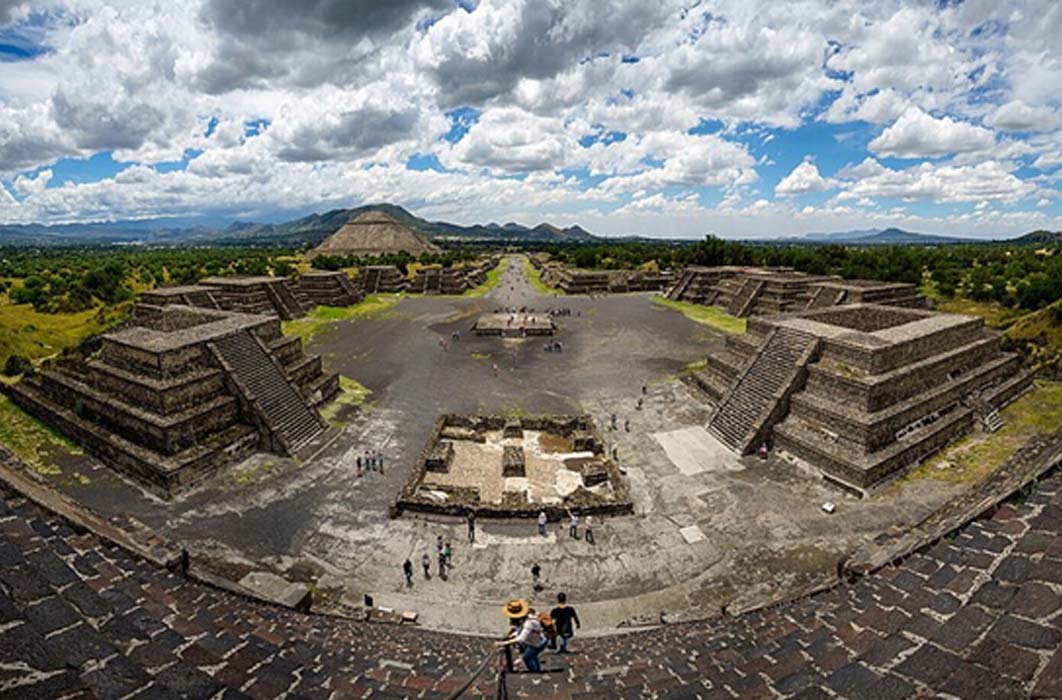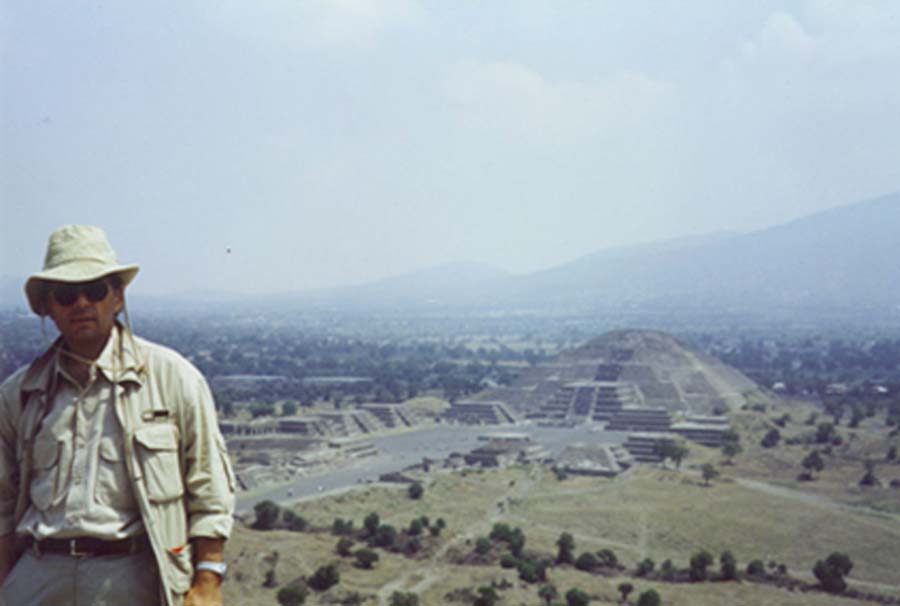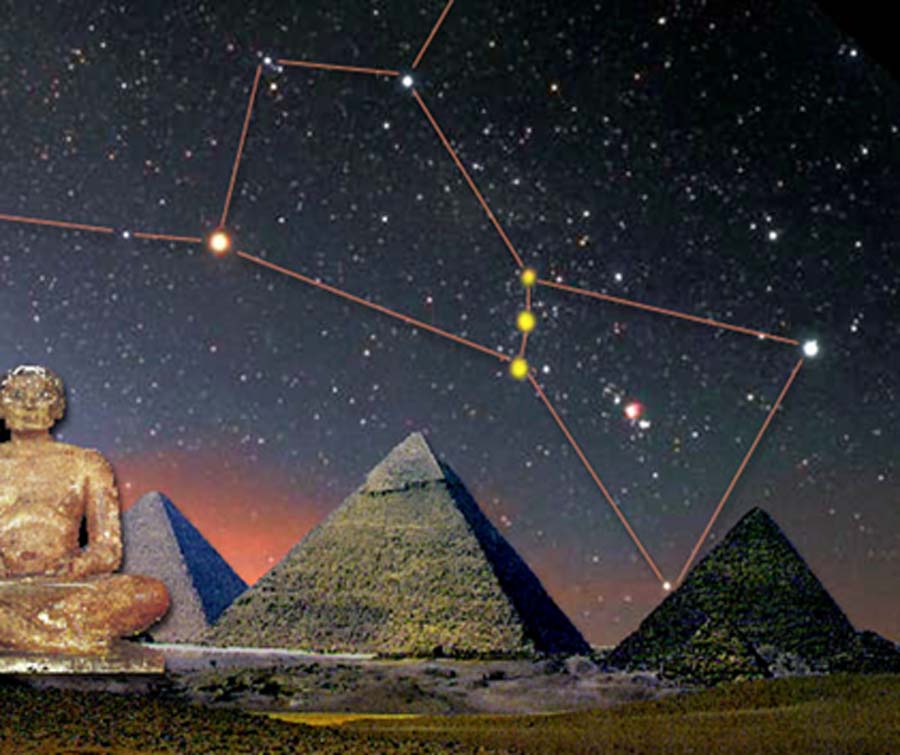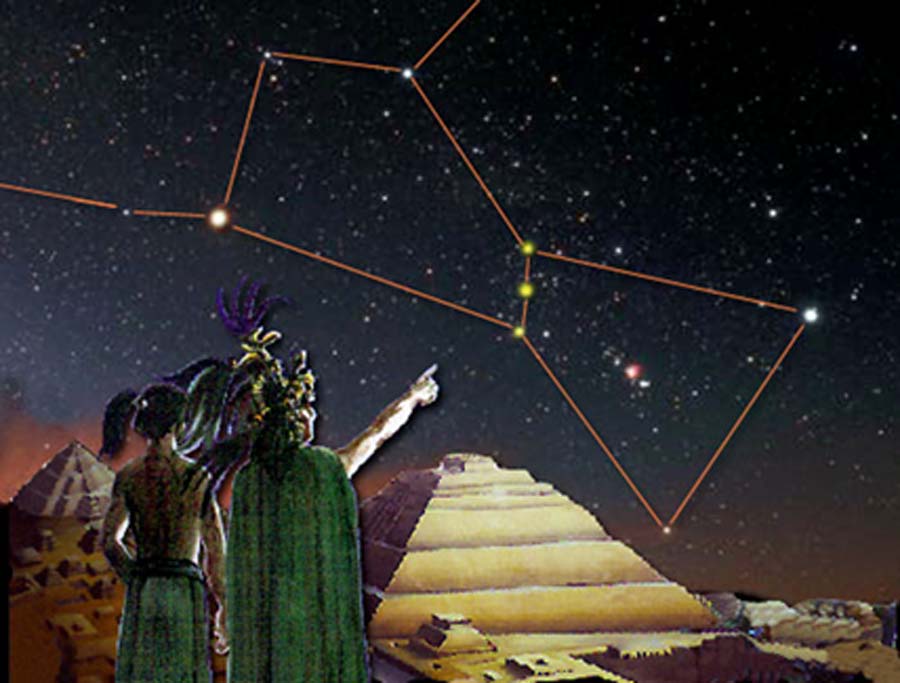
Orion: Archaeoastronomy Inspiration for the Pyramids of Giza and the Pyramids of Teotihuacan
As ancient Egyptian architects gazed up at the night sky and built the three pyramids of Giza based on the celestial plan of the Constellation of Orion, so millennia apart and at the other side of the world, in Mexico at Teotihuacan, architects similarly took their inspiration from Orion to construct their pyramids, with a slight deviation that can be explained by examining the sky on the date of the Winter Solstice, December 22.

Dr Roberto Volterri in Teotihuacán, on top of the Pyramid of the Sun.
In the background is the 'Calzada de los Muertos' and the Pyramid of the Moon clearly visible.
Celestial Inspiration
Defined as ‘the City of the Gods’ or ‘the city where one becomes a god’, located less than 50 kilometers from Mexico City, in a barren, almost 'lunar' landscape, quite different from the green and very humid panorama of Palenque, one finds Teotihuacán, one of the most mysterious cultural regions of archaeological Mexico. From the top of the 63-meter high ‘Pyramid of the Sun’, looking south, one can see a smaller ‘pyramid’ – though it does not have a pyramid structure – dedicated to the Feathered Snake, known as Templo de Quetzalcoatl, and north is the impressive ‘Pyramid of the Moon’. In the middle - almost connecting all three pyramids – runs the so-called 'Calzada de los Muertos', that is the 'Avenue of the Dead' or, in Aztec, Miccaotli. From this vantage point an idea struck Dr Roberto Volterri: “Is it possible that what Robert Bauval in his Orion Correlation Theory, Adrian Gilbert and other followers of 'heretical' archaeology claimed - regarding the possibility that the three pyramids of the Giza Plain; Cheope, Chefren and Mycerino represent an earthly projection of the three stars of the Belt of Orion - could also apply to the three pyramids of the archaeological site of Teotihuacàn?”

The Constellation of Orion - especially the three stars of the 'Belt' - could have appeared to a hypothetical Egyptian priest of the middle of the third millennium BC (or... much earlier?) who had observed the sky from the Giza Plain (Image: Courtesy of Dr Volterri / Deriv).
Could it be that the same inspirational motivation of the unknown builders of the three Egyptian pyramids applied to the unknown builders of the three structures of Teotihuacán, based upon comparative astronomy considerations?

Could the same constellation - differently oriented and in a current era – have inspired a priest of the populations that built the 'City of the Gods', Teotihuacán? (Image: Courtesy of Dr Volterri/ Deriv)




